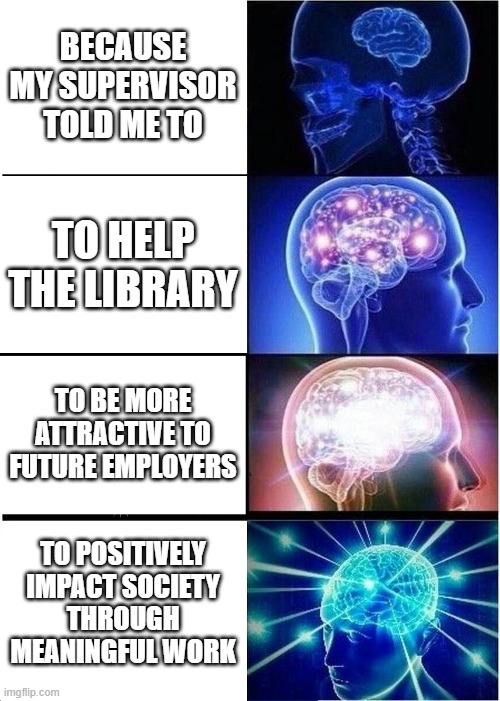How Do High-Impact Practices Help Students?
If libraries really want to contribute to the success of our student employees, we have to view their role as more than transactional and instead intentionally consider how to make their experiences [including soft skill training] transferable to other contexts.
We must shift away from treating student success as a byproduct of the work we need students to do and rather treat it as a core element of their employment. (Mitola et al., 2018)
Getting students thinking about how their library job can apply to the rest of their life involves metacognition. This is a buzzword you’ll see a lot if you do more research into teaching and learning. Here’s a definition we like from Vanderbilt University’s Center for Teaching:
Metacognition is, put simply, thinking about one’s thinking. More precisely, it refers to the processes used to plan, monitor, and assess one’s understanding and performance. Metacognition includes a critical awareness of a) one’s thinking and learning and b) oneself as a thinker and learner. (Chick, 2013)
The process of a student thinking about why they’re doing something, moving through the HIP components of feedback (4), integration (5) and connection (6), can be demonstrated with a (literal, unironic) galaxy brain meme:

(Image created with imgflip Meme Generator)
The student thought process can expand to include progressively broader thinking about why they’re doing something:
“Because my supervisor told me to,” to get paid, to not get in trouble, etc.
⇩
Feedback: To help the library; students understand how their work benefits their employer.
⇩
Integration: To be more attractive to future employers; students understand how their work benefits them.
⇩
Connection: To positively impact society through meaningful work; students understand how their work can benefit their broader community.
As you’ll learn in the next section, metacognition is foundational to transparent design.
From KnowYourMeme.com:
"Galaxy Brain, also known as Expanding Brain, is a multi-panel exploitable image series comparing the brain size of a person relative to other variables."
